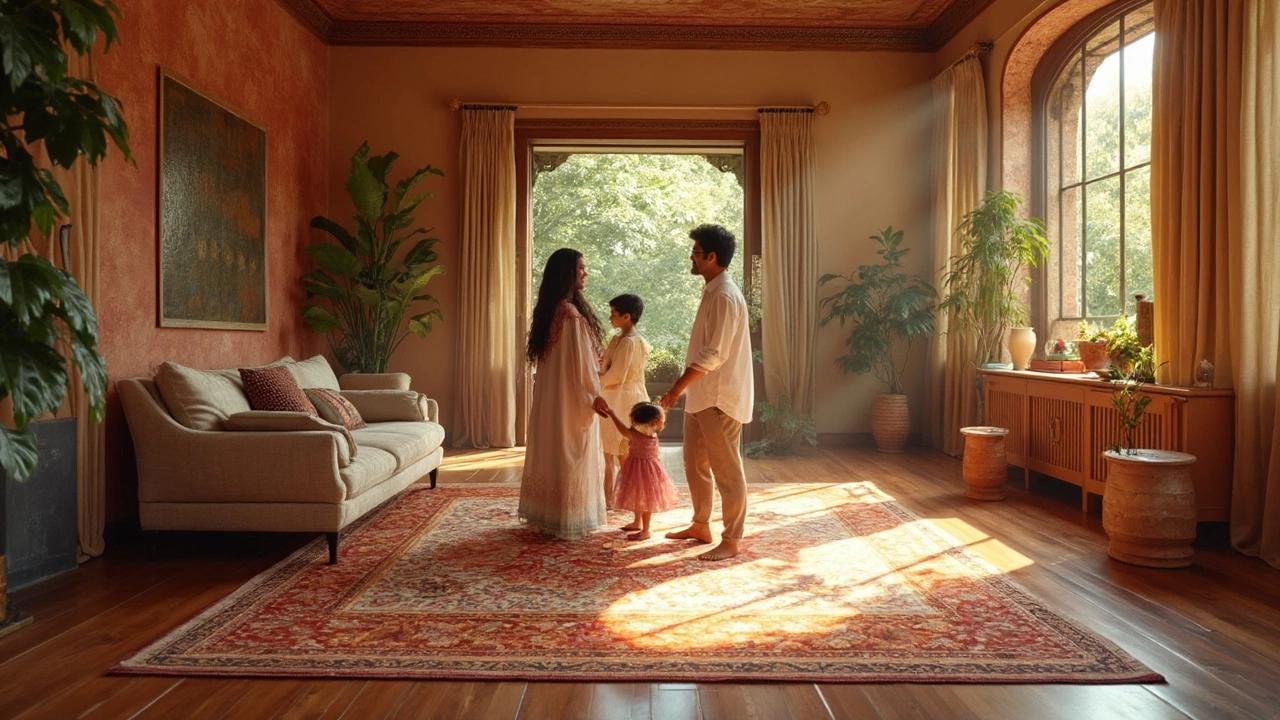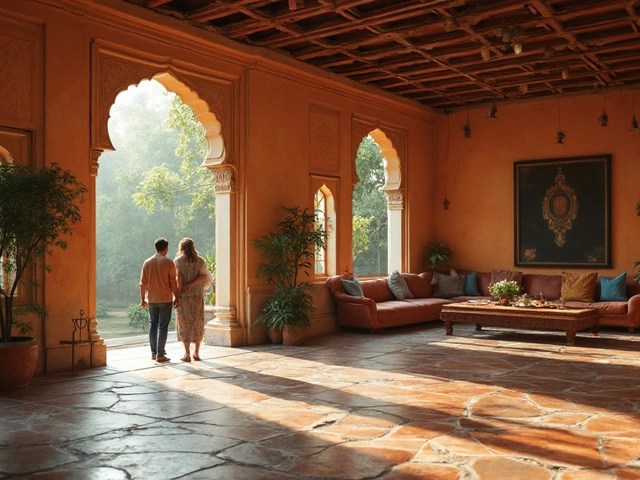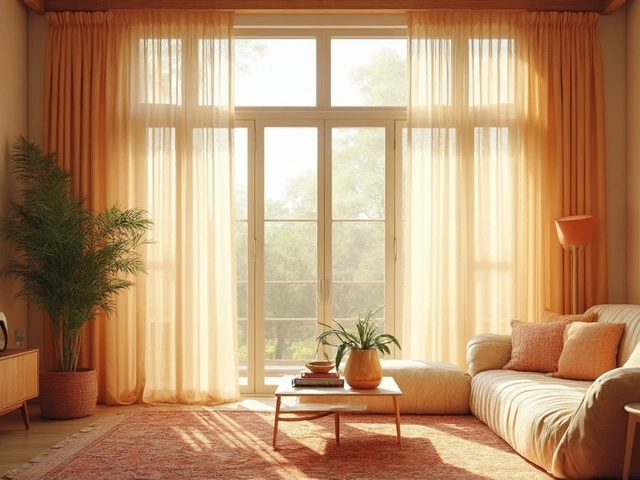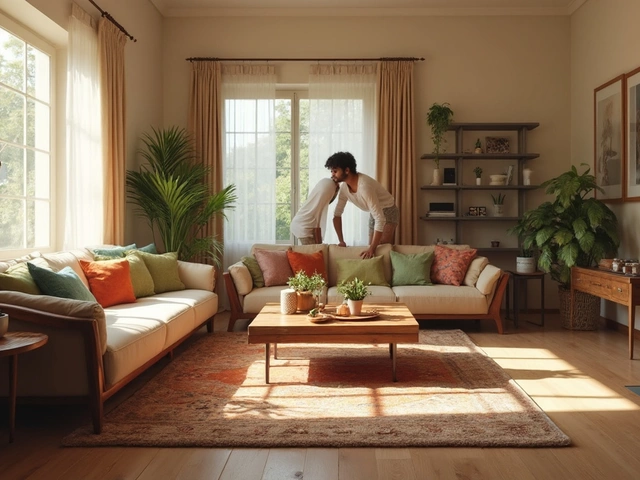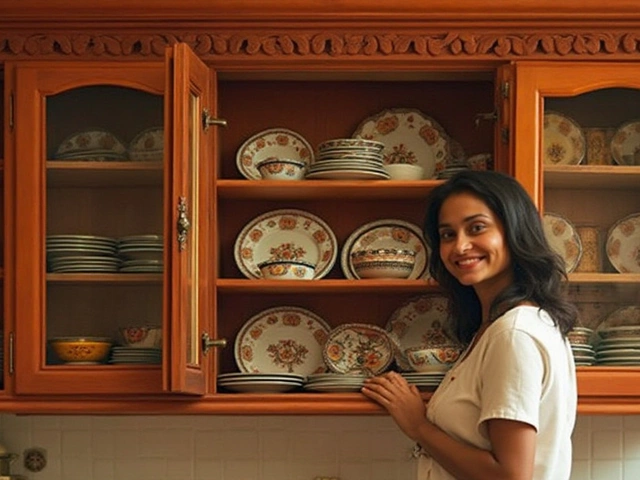You know what nobody ever brags about? Replacing brand-new floors right after moving in. Flooring isn't just about looks—it’s about value. Buyers walk in and notice the floors first thing. If they’re scratched up, ugly, or straight-up weird, you’ll see it on their faces, and probably in your home’s final sale price.
If you pick smart, putting in the right floors is nearly always worth it. In some cases, new flooring can boost your home’s value by thousands. But not every option is a goldmine, and spending more doesn’t always mean a bigger payoff. With so many options—hardwood, laminate, luxury vinyl planks, tile—how do you know what’s really worth it?
Let’s get into what actually boosts your home’s price and makes buyers want to move in right away. Think of this as your straight-shooting guide to flooring that pays for itself, instead of flooring that gets ripped out the second you hand over the keys.
- Hardwood: The Classic Investment
- Luxury Vinyl and Laminate: High Value for Less
- Tile and Stone: When to Splurge
- Flooring Mistakes That Can Hurt Value
Hardwood: The Classic Investment
There’s a reason realtors always gush about hardwood—everyone wants it. Classic flooring like oak, maple, or hickory grabs attention as soon as buyers walk in. Genuine hardwood feels solid underfoot, looks high-end, and just never goes out of style. Houses with hardwood can sell faster and often get higher offers. It’s like a secret weapon if you want your home to stand out.
Let’s talk numbers. According to the National Association of Realtors, homeowners who install hardwood usually see around a 70% to 80% return on the money they spend. It’s one of the few flooring types that often comes up in buyers’ wish lists—especially in living rooms and dining areas.
| Wood Type | Average Cost per sq ft | Estimated ROI |
|---|---|---|
| Oak | $8–$15 | 70–80% |
| Maple | $9–$16 | 68–78% |
| Hickory | $10–$18 | 68–75% |
If you’re worried about scratching or pets, go for harder woods (like hickory). You can also choose engineered hardwood, which has a real wood top layer but handles humidity better—useful for basements or kitchens.
Keep in mind, color trends come and go. Lighter, natural wood tones are super popular right now and make spaces look bigger. Avoid out-of-date orange finishes or super dark stains, as they can turn off buyers who want something fresh. If your old hardwood is still in decent shape, sometimes a quick sand and refinish is enough to make it look brand new and save you cash.
Hardwood isn’t just about looks. It lasts for decades if you treat it right, and that kind of durability really pumps up your home value. Just make sure it’s installed well, and skip rooms prone to water (like bathrooms).
Luxury Vinyl and Laminate: High Value for Less
Not ready to drop hardwood-level cash? Luxury vinyl and laminate flooring are turning heads with how much home value they deliver for the price. These floors look sharp, hold up against daily chaos, and don’t freak out when you spill coffee or let the dog run wild. In fact, recent surveys from Remodeling Magazine show that luxury vinyl and good laminate can recoup up to 70% of their cost when you sell—that’s not pocket change.
Let’s break down why these options work for people who want style, durability, and serious bang for their buck:
- Looks That Fool the Eye: Modern luxury vinyl planks (LVP) and laminate come in tons of colors and textures. Some are honestly tough to tell apart from real wood or stone unless you’re up close and squinting.
- Installation Is Totally DIY-Friendly: You’ll save even more because a lot of these products snap together without a pro. Even if you’re not handy, you can click LVP or laminate together over most old floors.
- Water Resistance: Got kids? Pets? Laminate and vinyl don’t mind wet shoes or kitchen spills. High-end vinyl is even used in bathrooms and basements where wood would warp.
- Easy on the Wallet: The difference in price is big. Laminate or LVP usually runs $2–$6 per square foot, while hardwood can cost triple that before you even pay for labor.
| Flooring Type | Average Cost per Sq. Ft. (Material Only) | Resale Value |
|---|---|---|
| Luxury Vinyl Plank (LVP) | $2 – $6 | High |
| Laminate | $2 – $5 | Medium-High |
| Hardwood | $5 – $15 | High |
If your budget’s tight but you don’t want cheap-looking floors, these options win. One quick tip: stick to styles that mimic wood or classic tile patterns. Super trendy prints or odd colors might feel cool now but could make future buyers cringe.
And one last bit—if you want to boost resale value, keep the floors consistent across open spaces. Nothing turns people off faster than a patchwork of clashing floor styles in every room.

Tile and Stone: When to Splurge
There’s a reason real estate ads brag about slate in the entryway or marble in the bathroom. Certain types of tile and stone flooring instantly make a home feel pricier. But before you haul in heavy boxes of tile, it’s smart to know exactly when laying down the cash actually pays you back.
Bathrooms and kitchens are top spots where high-end tile and stone matter most. Why? These floors take a beating from water, spills, heat, and daily traffic. Porcelain and natural stone come out swinging, handling everything from dropped hairdryers to muddy boots. Bonus points: they’re easy to clean, look fancy, and don’t go out of style.
Not all tile is created equal, though. Porcelain is king for durability—harder than regular ceramic, basically waterproof, and comes in every style under the sun. If you want luxury, granite or marble deliver. Go for classic colors like white, gray, or tan if you’re eyeing future resale.
- Porcelain Tile: Almost indestructible, good for any room—especially kitchens and baths.
- Natural Stone (Marble, Granite, Slate): Adds a custom look, but costs more to install and maintain.
- Ceramic Tile: Cheaper than porcelain, decent for low-traffic areas.
If you’re looking to boost your home value for a sale, keep an eye on consistency. Using the same tile throughout the kitchen and bathroom makes your space feel pulled together. Mismatched tiles scream DIY project gone wrong, which makes buyers nervous.
| Flooring Type | Average Cost (per sq ft) | Best For |
|---|---|---|
| Porcelain Tile | $3 - $12 | Kitchens, bathrooms, entryways |
| Marble | $8 - $20 | Bathrooms, high-end kitchen areas |
| Granite | $5 - $15 | Kitchens, mudrooms |
| Ceramic Tile | $1 - $6 | Laundry rooms, backsplashes |
One tip: skipping cheap tile jobs is key. Nothing kills resale value faster than crooked grout lines or loose tiles. Hire a pro if you want the floor to last. And don’t go too wild with trendy patterns—neutral wins every time if you want the next homeowner to say yes, not "well, maybe."
Flooring Mistakes That Can Hurt Value
Choosing the wrong floors can tank your home's resale price way faster than you might think. Some mistakes are super common but totally avoidable, as long as you know what to look out for. Here’s what usually trips people up—and trust me, buyers notice.
- Going Too Trendy: Remember those bright-colored carpets from the ’80s or weird tile patterns that showed up on real estate websites last year? Super trendy floors might look fun now, but they age fast and make buyers think about the cost and hassle of updating them.
- Mixing Too Many Types: Every room with a different flooring type? That just screams "project house." Most buyers want smooth transitions and a connected look. Stick to one or two main flooring styles for the whole house. It makes spaces feel bigger, too.
- Cheap, Low-Quality Materials: Bargain options might sound like a win, but flimsy laminate can bubble, peel, or get scratched super quickly. Real estate agents will tell you buyers spot this stuff right away and mentally subtract from your asking price.
- Ignoring the Basics—Like Subfloor Problems: If your floors squeak, bounce, or feel uneven, nobody cares how pretty the planks are. Fix those subfloor issues first. Skipping this step is a dealbreaker for a lot of buyers—you’ll lose value no matter what materials you use.
- Installing Carpet in the Wrong Places: Carpet in bathrooms or kitchens turns people off. These are high-moisture areas and everyone knows carpet just holds on to smells and stains.
If you’re curious about how much bad choices can cost, have a look at this quick snapshot from recent home sales statistics:
| Mistake | Average Reduction in Sale Price |
|---|---|
| Multiple mismatched flooring types | $2,000 - $4,000 |
| Cheap/peeling laminate | $1,500 - $3,000 |
| Dirty or outdated carpet | $1,000 - $2,500 |
Bigger takeaway? Don’t cut corners on flooring. Pick materials with real staying power, keep things consistent, and never slap carpet in a bathroom if you want to keep buyers interested (and your home value looking good).
